An Open Letter to CHSWC re: WCIS

To the Members of the California Commission on Health and Safety and Workers’ Comp (CHSWC),
California needs objective, verifiable data and credible, expert analysis to fully understand (and improve) the workers’ comp system. CHSWC annual reports are assumed to be authoritative and form the basis of state policy.
But there’s a serious problem. A significant source of data informing CHSWC reports is, at best, questionable: the Workers’ Compensation Information System (WCIS).
Established and managed by the Division of Workers’ Compensation (DWC), the WCIS is supposed to be the primary source of raw data on workers’ comp claims, as provided by claims administrators. By law, the DWC must enforce mandatory WCIS reporting requirements, with penalties for claims administrators who fail to comply.
However, as reported recently, the DWC does not enforce WCIS reporting requirements. Instead, the DWC has designated WCIS reporting “voluntary.” This should prompt serious concern since CHSWC reports rely heavily on these voluntary, wholly unverified data.
While CHSWC members can access WCIS data, the DWC does not make it available for review to the general public. The DWC does not provide taxpayers and stakeholders with any method to independently verify or corroborate the data claims administrators submit to WCIS (voluntarily, based on their internal decision-making to which the public is not privy).
The only public access to WCIS data is from CHSWC reports, which vaguely describe the data as high-quality—without evidence. Is the public expected to blindly trust CHSWC’s endorsement of WCIS data in the same manner that CHSWC seems to blindly trust the claims administrators submitting their data voluntarily?
Below, we list every instance in which the most recent (2023) CHSWC Annual Report cites WCIS data. From fraud to COVID to payer compliance and beyond, CHSWC asserts conclusions using WCIS data that are not subject to substantive standards of completeness or review for accuracy.
WCIS Mentions in CHSWC 2023 Report
The CHSWC 2023 Annual Report mentions the WCIS as a source of data and information 22 times, and cites WCIS data 6 times in the footnotes.
The topics for which CHSWC cites WCIS data are serious and vital to the improvement of workers’ comp overall. Perhaps most disturbingly, your commission encourages the use of WCIS data to combat:
- Fraud by providers and injured workers, and
- Non-compliance by claims administrators
In other words, you recommend policing providers and injured workers by using unverified data claims administrators volunteer—and you recommend policing claims administrators by using whatever unverified data claims administrators volunteer. Heads, payers win. Tails, providers lose.
Every instance below is an example of CHSWC using potentially flawed WCIS data to guide legislators, regulators, and other stakeholders. Given the responsibility the state gives your commission, California deserves better than reports based on highly questionable data claims administrators decide to share.
As importantly, the DWC fails to share even this partial, one-sided data with stakeholders or the public for review. The data (and CHSWC’s conclusions) are based on unsubstantiated information coughed up by claims administrators.
California employers and injured workers deserve better.
Page |
CHSWC Report Excerpt |
daisyBill Comment |
14 |
“Consider recommendations in the RAND report “Provider Fraud in California Workers’ Compensation” related to provider fraud, including… |
How can unverified data voluntarily supplied by claims administrators be trusted as evidence of fraud?
How does the DWC use the WCIS database to detect fraud?
|
31 |
Market share estimates are based on unverified data voluntarily supplied by claims administrators to WCIS. |
|
32 |
“The overall system size for 2022 is estimated at 1.54 times the insured sector size. This multiplier is based on claims counts in the Workers' Compensation Information System (WCIS). CHSWC is using a three-year moving average of WCIS claim counts because it blunts the effect of one-time aberrations. (See the market shares for 2022 in Table 1). The annually revised estimate of the multiplier is based on updated claims data provided by WCIS as well as [other sources]...” |
CHSWC estimates overall system size using a multiplier based primarily on unverified data voluntarily supplied by claims administrators to WCIS.
|
32 |
Claims by market share based on unverified data voluntarily supplied by claims administrators to WCIS.
|
|
36 |
“In order to identify, capture, and track COVID-19 injuries, DWC updated certain filing and application forms, introduced new medical and claims-related codes and data elements in WCIS and Electronic Adjudication Management System (EAMS)...” |
DWC updated WCIS in order to better study COVID injuries—no specifics offered. |
41 |
“WCIS COVID-19 claim counts and characteristics Whereas the WCIRB’s COVID-19 claims data, as described in the previous subsection, are collected from the WC-insured sector exclusively, DWC’s WC Information System (WCIS) collects the data from the private WC insured employers, the State of California, and private and public self-insured employers.” |
CHSWC acknowledges Workers’ Compensation Insurance Rating Bureau (WCIRB) data as derived solely from insurers; claims WCIS fills in those gaps despite data being voluntarily supplied and unverified. |
42 |
CHSWC reports total COVID claims using “DWC-WCIS FROI [First Report of Injury].”
|
|
42 |
CHSWC reports monthly COVID cases using “DWC-WCIS FROI.”
|
|
43 |
CHSWC reports denial rates for COVID cases using “DWC-WCIS FROI.”
|
|
43 |
CHSWC reports on COVID cases by region using “DWC-WCIS FROI.”
|
|
44 |
CHSWC reports peak COVID cases by region using “DWC-WCIS FROI.” |
|
45 |
CHSWC reports COVID claims by industry using “DWC-WCIS.”
|
|
46 |
CHSWC reports on COVID claims in “Top Five” industries (insured) using “DWC-WCIS.”
|
|
46 |
CHSWC reports on COVID claims by gender using “DWC-WCIS FROI.”
|
|
47 |
CHSWC reports on COVID claims by age groups using “DWC-WCIS FROI.”
|
|
108 |
“The bases for selecting audit subjects for targeted audits are specified in California Code of Regulations (CCR) 8, Section 10106.1(c), effective January 1, 2003:... |
WCIS is used as part of the process for selecting Audit Subjects—so claims admins voluntarily submit data that could get their own organizations audited? |
154 |
“WCIS receives an average of 700,000 First Reports of Injury and Subsequent Reports of Injury (FROI/SROI) claims per year and 11 million medical bills with 32 million bill lines per year from WC claims administrators…
WCIS data is being used more than ever to help monitor and improve the WC system in California. The quality of the data has enabled rigorous empirical research, providing a real, data-informed foundation for policy. WCIS staff provides research, regulatory and educational outreach support through one-on-one training and consultation with reporting entities to improve the FROI/SROI and medical billing data set.
To be able to increase the quality of the FROI/SROI data WCIS collects in order to support more regulatory analysis and meet the mandates, in 2022 the WCIS team has started the ground work to adopt the IAIABC FROI/SROI Release 3.1. • Evaluating the efficiency and adequacy of benefit delivery • Monitoring Covid-19 exposures in workplace and identifying high Covid-19 exposure risk occupation and industry groups • Assisting the department and Cal/OSHA in the safety and health rulemaking process” |
CHSWC believes that the “Quality of [WCIS] data has enabled rigorous empirical research, providing a real, data-informed foundation for policy.”
How “rigorous” can research based on unverified, voluntarily-submitted data be?
|
155 |
“Since April 6 of 2016, 90.6 million medical bills with 258.8 million bill lines were collected in WCIS Medical Version 2.0. Pre pandemic medical bills averaged 11 million per year. During the pandemic medical bill count increased to 11.5 million in 2020, 12.1 million in 2021 and went back down to 11.3 million by 2022.
• Combat against medical fraud and abuse • COVID-19 legislative analysis • Occupational disease analysis • MTUS drug formulary • Measuring the timeliness and utilization of treatment for injured workers. |
WCIS is relied upon to fight COVID, combat fraud and abuse, inform MTUS, and study UR. |
241 |
“To address the above study objectives, RAND conducted a literature review of COVID-19 issues. The researchers used a mixed-methods approach, including rigorous quantitative analysis, using data from the Workers’ Compensation Information System (WCIS), and 32 qualitative interviews with workers, employers, and public health officials to capture diverse perspectives on COVID-19 claims and SB 1159.” |
From “Special Report” Included in the CHSWC study, titled A Study of COVID-19 Claims and Presumptions Under Senate Bill 1159 |
244 |
“To address the research questions posed by CHSWC, RAND used a mixed-methods approach that included rigorous quantitative analysis of data from the Workers’ Compensation Information System (WCIS) for 2008–2019 accident years…” |
From “Special Report” Included in the CHSWC study, titled Evaluation of Incidence of Mental Health Conditions or Illnesses Among Firefighters and Peace Officers |
260 |
“The primary data source for the study comes from the Workers’ Compensation Information System (WCIS) database maintained by DWC for services provided from 2007 to 2015.” |
From “Special Report” Included in the CHSWC study, titled Evaluation of SB 863 Medical Care Reforms |
267-8 |
“Following the approach used in the prior report, RAND analyzed administrative data from the California Workers' Compensation Information System (WCIS) linked to data on earnings for injured workers, tailoring the results to the reforms and taking advantage of previously unavailable data.” |
From “Special Report” Included in the CHSWC study, titled RAND: The Frequency and Economic Impact of Musculoskeletal Disorders for California Firefighters |
Footnotes citing WCIS in CHSWC Report:
Page |
Footnote Number |
CHSWC Footnote |
31 |
54 |
“The latest year for which WCIS reports are reasonably complete. Data are from the DWC report from the WCIS database, FROI and SROI Data Summary, by Year of Injury,” data as of June 16, 2023. Due to delayed reporting, the number of claims reported to WCIS for a given year may grow by more than 5 percent between the second and the fourth years after the end of the accident year. Boden, Leslie I. and Al Ozonoff, “Reporting Workers’ Compensation Injuries in California: How Many are Missed?” (2008), CHSWC Report.” |
31 |
55 |
“WCIS, Table 4, “Workers’ Compensation Claims by Market Share,” data run as of June 16, 2023, https://www.dir.ca.gov/dwc/wcis/WCIS_tables/Table-4/WCIS_Reports-Table-4.html” |
32 |
1 |
“WCIS Database as of June 16, 2023, https://www.dir.ca.gov/dwc/wcis/WCIS_tables/Table-4/WCIS_Reports-Table-4.html” |
36 |
66 |
|
41 |
87 |
“The data on WCIS COVID-19 claims was provided by DWC WCIS based on reports run on December 18, 2023. The figures cover 48 months from January 2020 to December 2023.” |
41 |
88 |
“WCIS definitions of WC market sectors, https://www.dir.ca.gov/dwc/wcis/WCIS_tables/Table-4/WCIS_Reports-Table-4.html” |
daisyBill makes treating injured workers easier, faster, and less costly. Request a free demonstration below.
REQUEST DEMO
DaisyBill provides content as an insightful service to its readers and clients. It does not offer legal advice and cannot guarantee the accuracy or suitability of its content for a particular purpose.
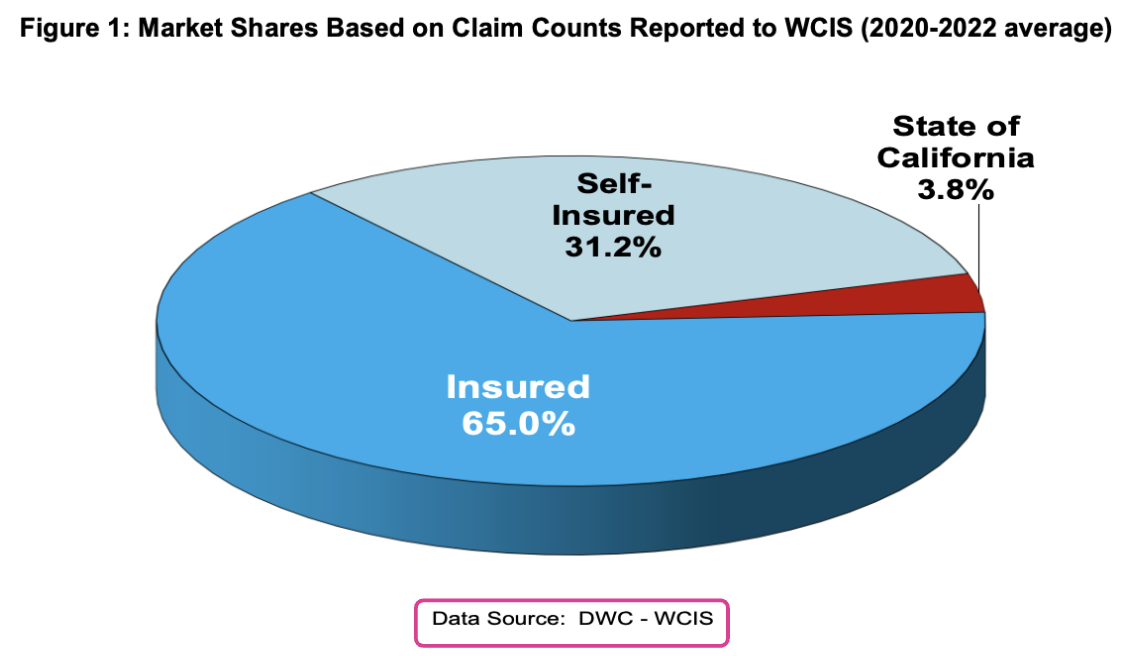


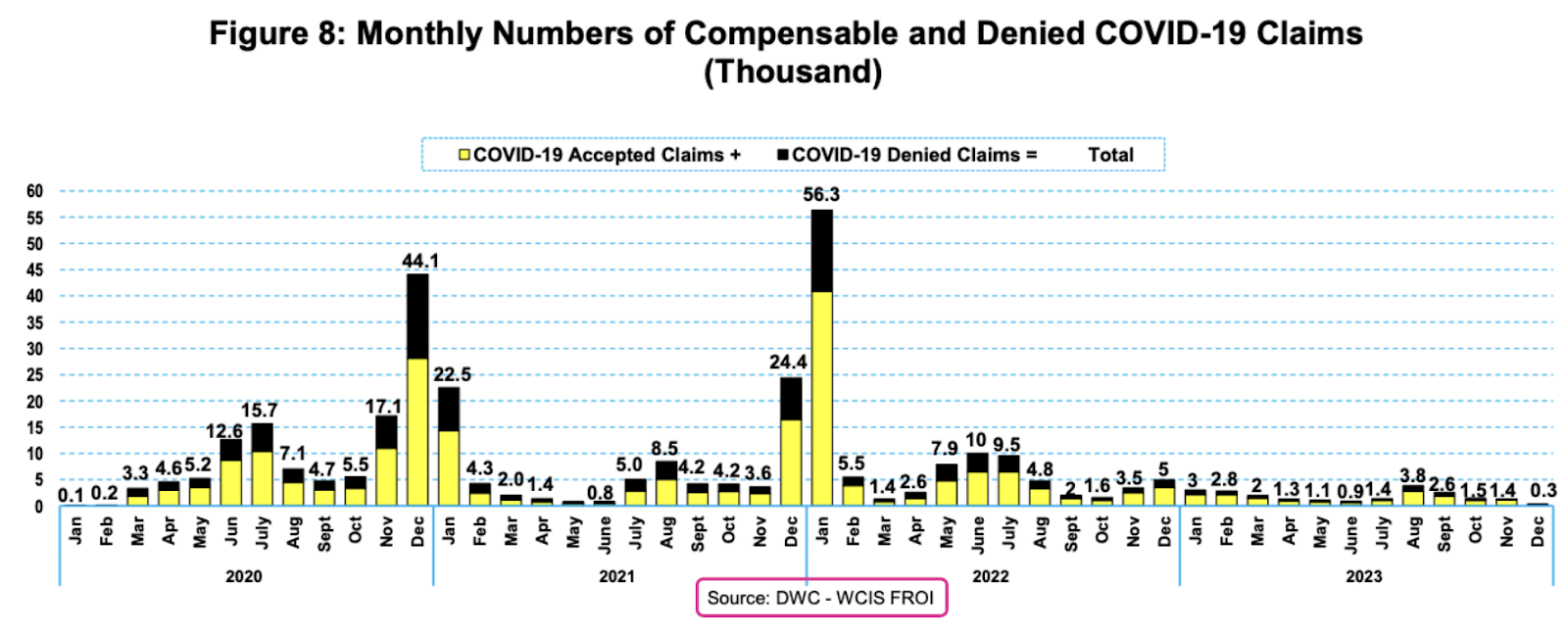
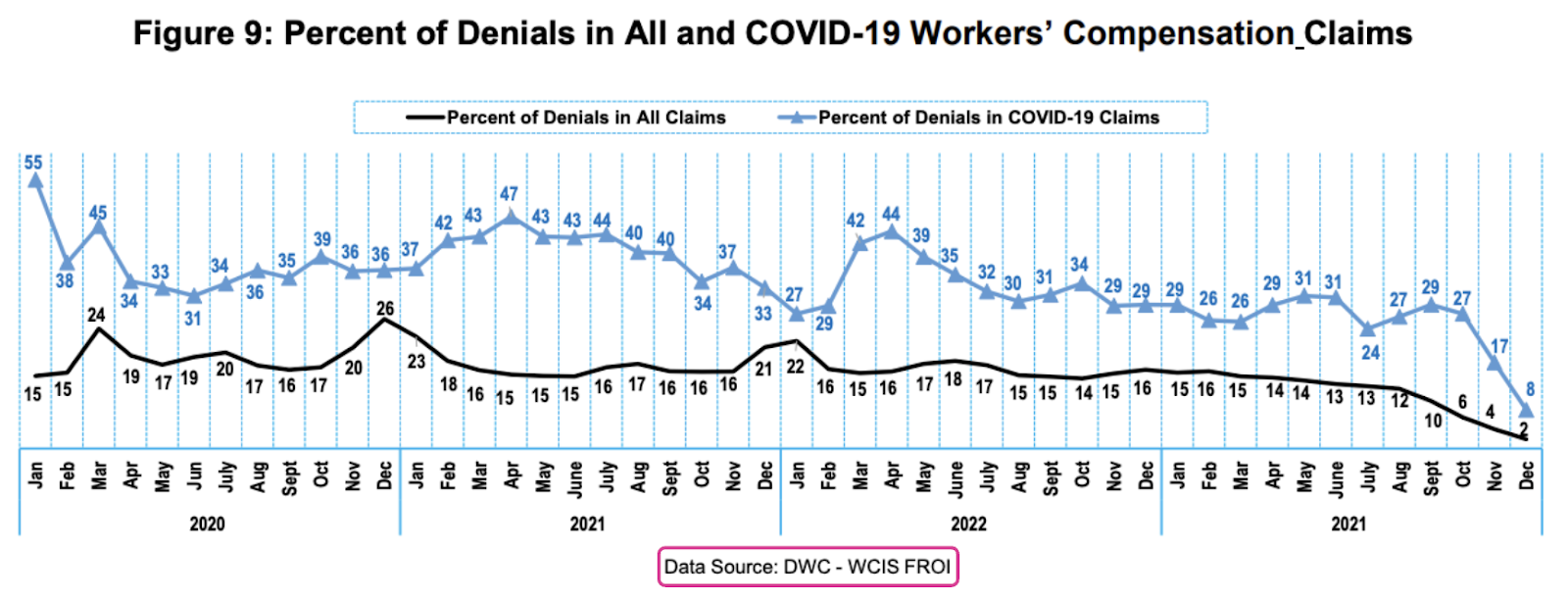



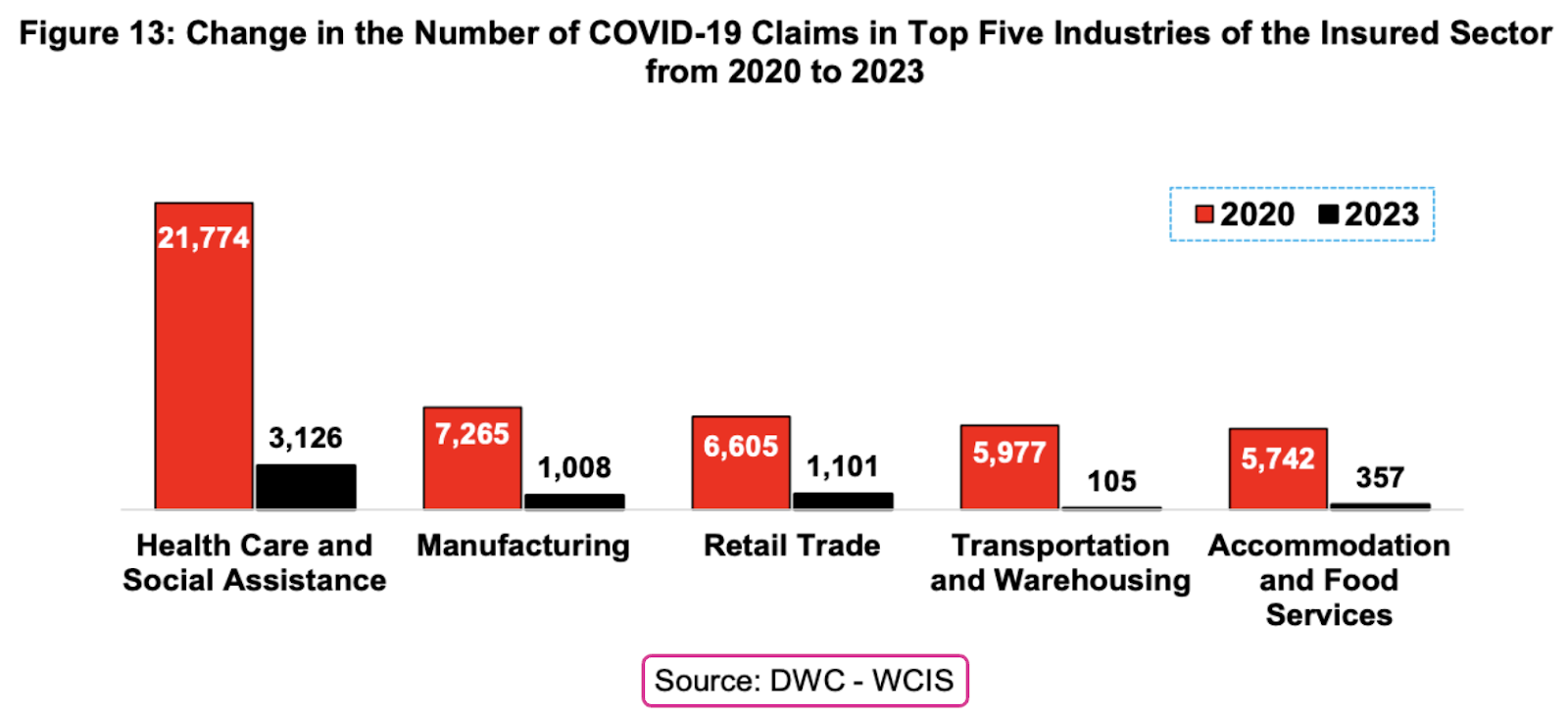
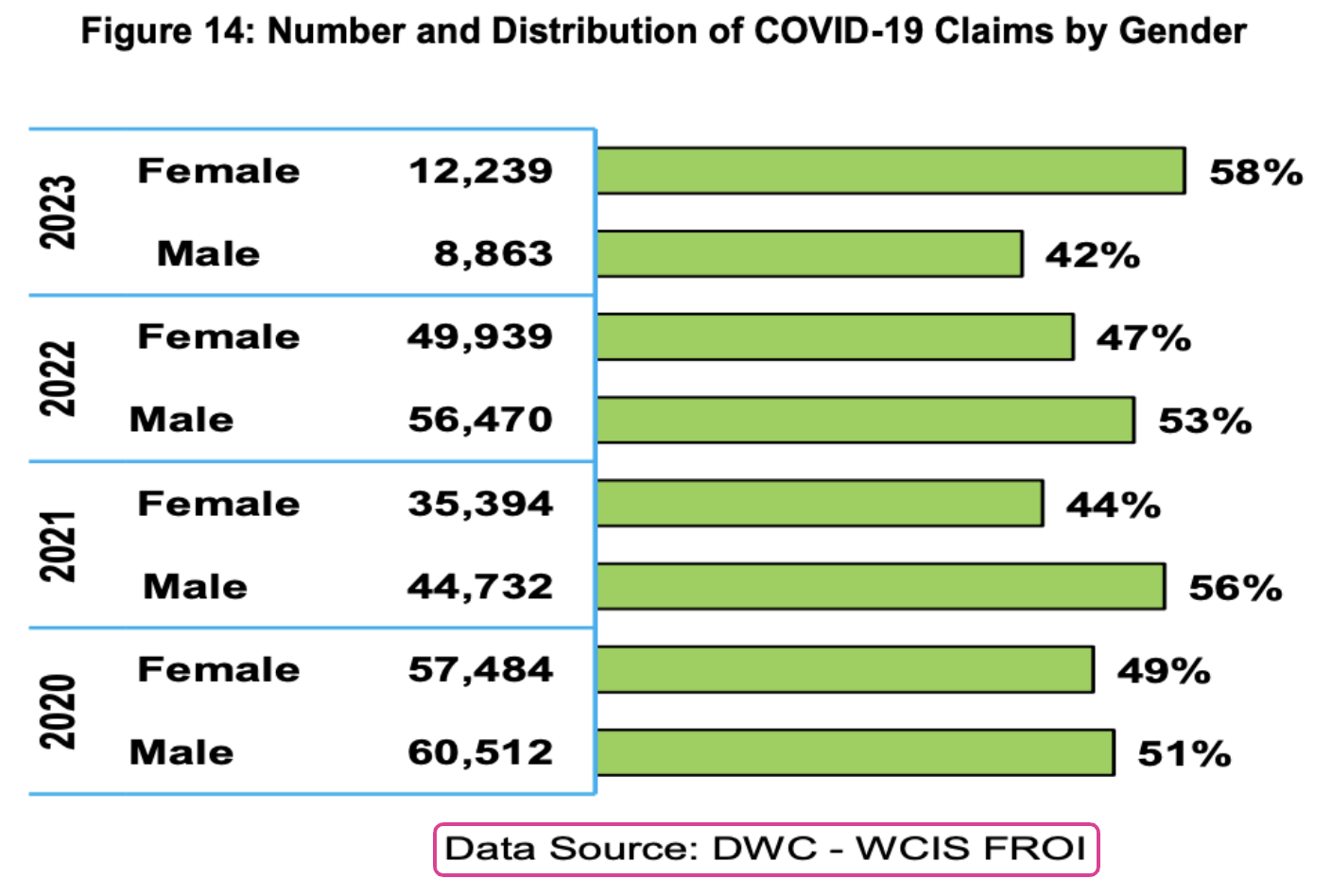
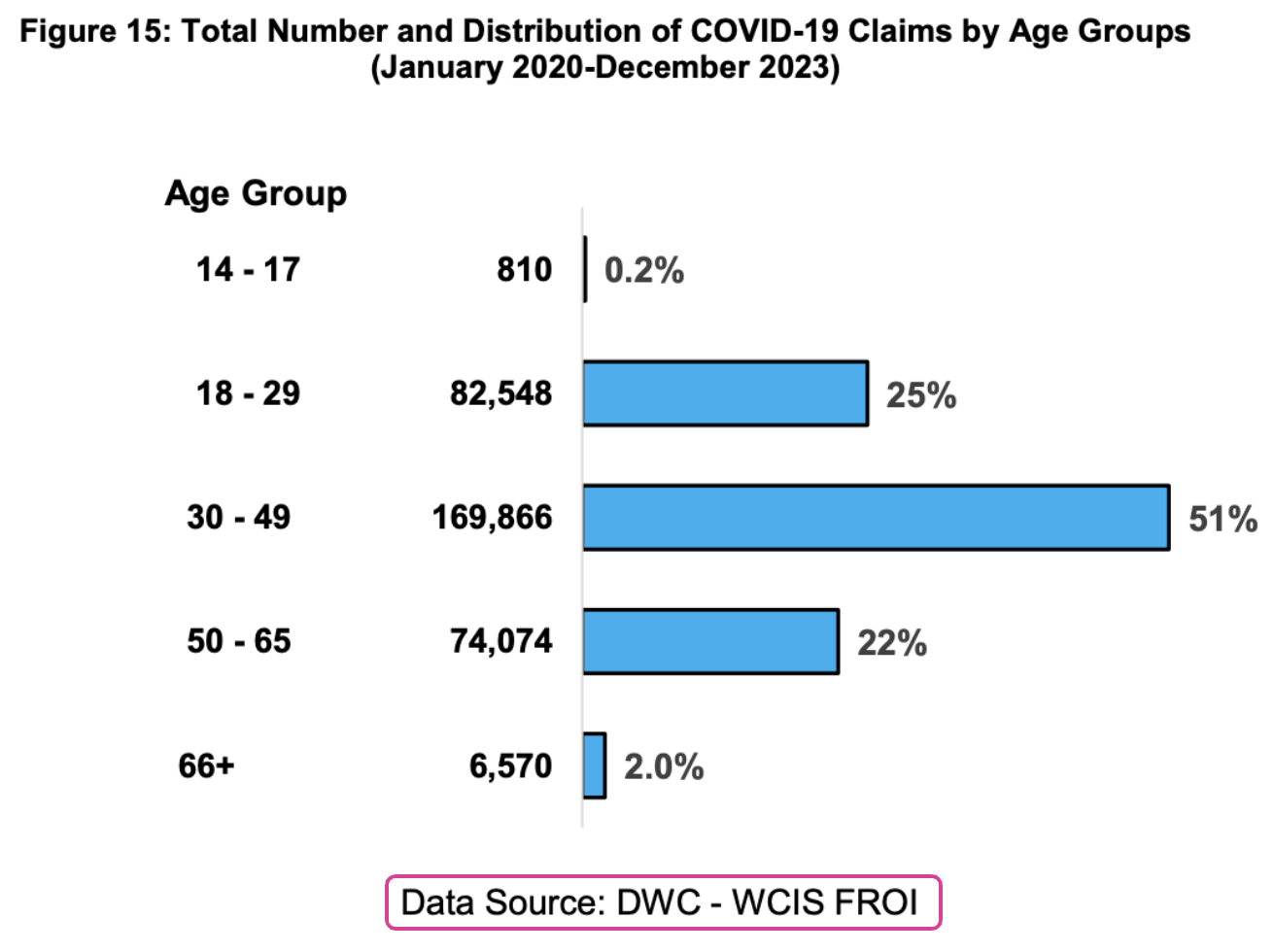




.gif)

